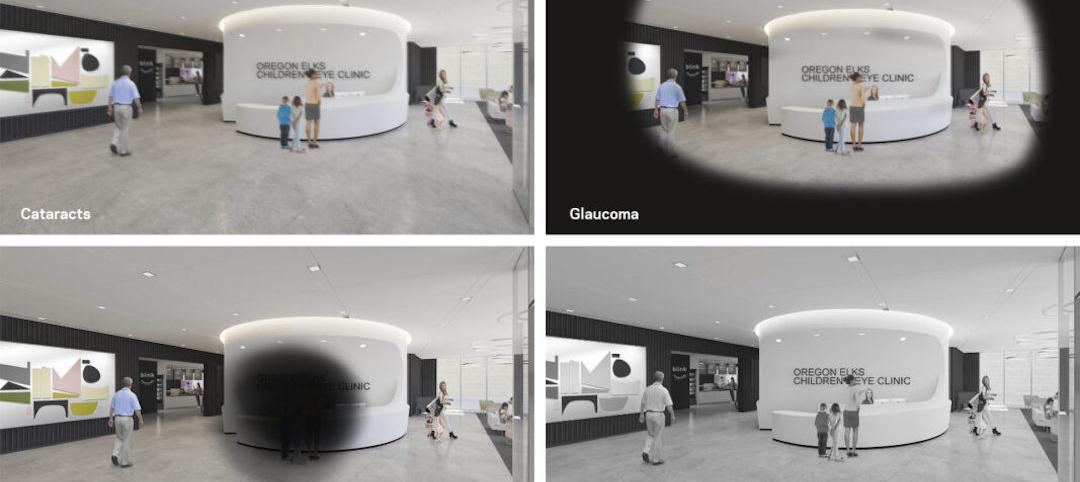The National Council of Architectural Registration Boards (NCARB) has accepted proposals from over a dozen architecture schools to implement an integrated path to licensure within academic programs accredited by the National Architectural Accrediting Board (NAAB).
This initiative allow students enrolled in an NCARB-accepted path to complete the requirements for architectural licensure at the time of graduation. The NCARB Integrated Path initiative invites programs accredited by the NAAB to propose approaches that would result in completing the requirements of the Intern Development Program (IDP) and the opportunity to take each division of the Architect Registration Examination (ARE) before graduation. Passing all ARE divisions prior to graduation is not required.
In its inaugural effort, the NCARB Integrated Path initiative has solicited statements of interest from all schools with NAAB-accredited programs and then invited all with accredited programs to submit proposals, which were received this past June. The review of these proposals was conducted by the NCARB Licensure Task Force (LTF), composed of interns/recently licensed architects, state licensing board members and executives, academic deans and instructors, and non-architect public members, as well as leaders representing the American Institute of Architects (AIA), the American Institute of Architecture Students (AIAS), the Association of Collegiate Schools of Architecture (ACSA), and the National Architectural Accrediting Board (NAAB).
NCARB will respond to each school with feedback as to how their proposal is or could become acceptable before releasing the names of the accepted programs. All programs that submitted proposals will be coached as to next steps including modifications necessary to move forward toward implementation. NCARB will also engage its state licensing board members regarding regulatory changes to allow access to the ARE prior to graduation.
After providing further feedback to the proposing schools, NCARB will release the names of the initial group of accepted programs. Programs needing more development will be encouraged to resubmit proposals utilizing the feedback from the Task Force. A new RFP for the second round of participation will launch in early 2016 and will be repeated on an annual basis, to be managed by a new Integrated Path Evaluation Committee appointed by the NCARB President Ward and include diverse geographic, age, demographic, and collateral perspectives.
Related Stories
Architects | Feb 15, 2022
Binkley Garcia Architecture and Goodwyn Mills Cawood join forces in Nashville
Goodwyn Mills Cawood (GMC) is pleased to announce the acquisition of architecture and interior design firm Binkley Garcia Architecture in Nashville.
Resiliency | Feb 15, 2022
Design strategies for resilient buildings
LEO A DALY's National Director of Engineering Kim Cowman takes a building-level look at resilient design.
Products and Materials | Feb 14, 2022
How building owners and developers can get ahead of the next supply chain disaster
Global supply chain interruptions that started at the very beginning of the pandemic are still with us and compounding every step of the way. Below are a few proven tips on how to avert some of the costly fallout should we be faced with similar commercial disasters at any time in the future.
Urban Planning | Feb 14, 2022
5 steps to remake suburbs into green communities where people want to live, work, and play
Stantec's John Bachmann offers proven tactic for retrofitting communities for success in the post-COVID era.
Urban Planning | Feb 11, 2022
6 ways to breathe life into mixed-use spaces
To activate mixed-use spaces and realize their fullest potential, project teams should aim to create a sense of community and pay homage to the local history.
Senior Living Design | Feb 11, 2022
Design for senior living: A chat with Rocky Berg, AIA
Rob Cassidy, Editor of MULTIFAMILY Design + Construction, chats with Rocky Berg, AIA, Principal with Dallas architecture firm three, about how to design senior living communities to meet the needs of the owner, seniors, their families, and staff.
Architects | Feb 11, 2022
How computer simulations of vision loss create more empathetic buildings for the visually impaired
Here is a look at four challenges identified from our research and how the design responds accordingly.
Healthcare Facilities | Feb 10, 2022
Respite for the weary healthcare worker
The pandemic has shined a light on the severe occupational stress facing healthcare workers. Creating restorative hospital environments can ease their feelings of anxiety and burnout while improving their ability to care for patients.
Architects | Feb 8, 2022
Perkins Eastman and BLT Architects merge
Expanding services in hospitality, education, and mixed-use sectors to better serve clients.
Architects | Feb 3, 2022
SmithGroup elevates Mark Adams to lead workplace practice
In his new role, Adams leads the firm’s practice devoted to the design of corporate and commercial facilities.

















